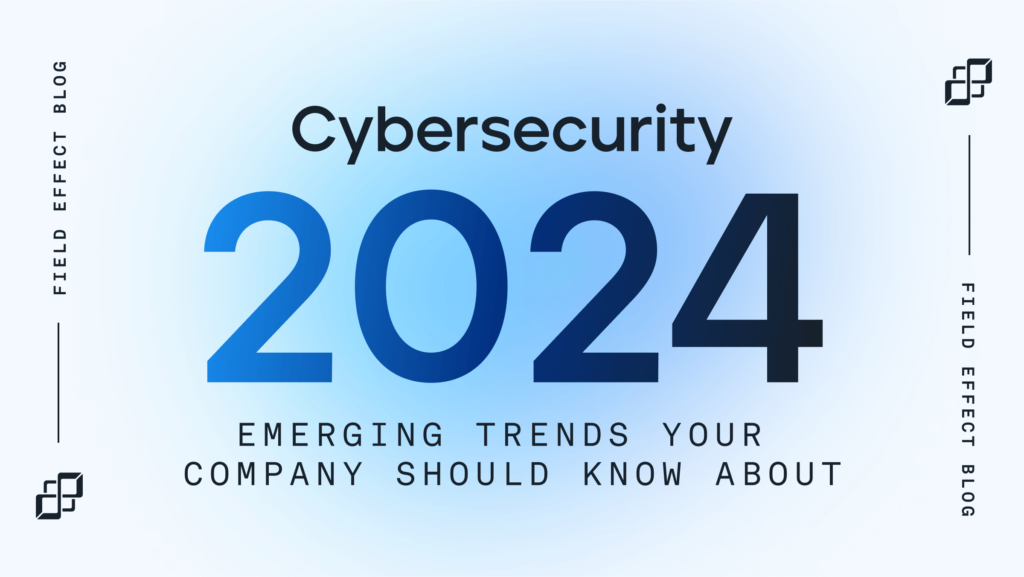Cybersecurity in 2024: Navigating the Evolving Threat Landscape

As we venture further into 2024, the landscape of cybersecurity continues to evolve at an unprecedented pace. With rapid technological advancements and an ever-growing digital footprint, safeguarding against cyber threats has never been more critical. In this blog, we’ll delve into the key trends and strategies shaping cybersecurity in 2024, highlighting what individuals and organizations need to know to stay ahead of potential threats.
1. The Rise of AI-Powered Cyber Threats
Artificial Intelligence (AI) is revolutionizing various sectors, but it also poses significant risks to cybersecurity. In 2024, we’re witnessing the emergence of sophisticated AI-driven cyberattacks. These threats leverage machine learning algorithms to automate and enhance attacks, making them more efficient and harder to detect.
How to Defend Against AI-Powered Threats:
- Invest in Advanced Threat Detection: Use AI-powered security solutions that can analyze patterns and detect anomalies in real-time.
- Regularly Update Security Protocols: Ensure that your cybersecurity measures are up-to-date to defend against the latest AI-driven threats.
2. Increased Focus on Ransomware Protection
Ransomware attacks have become a major concern for businesses and individuals alike. In 2024, these attacks are growing more sophisticated, often targeting critical infrastructure and demanding substantial ransoms in cryptocurrency.
How to Defend Against AI-Powered Threats:
- Implement Robust Backup Solutions: Regularly back up critical data and ensure backups are stored offline or in a secure, separate network.
- Educate and Train Employees: Conduct regular training sessions to help employees recognize phishing attempts and other tactics used in ransomware attacks.
3. The Expansion of Zero Trust Architecture
The Zero Trust model, which operates on the principle of “never trust, always verify,” is gaining traction in 2024. This approach requires rigorous verification for every user, device, and application, regardless of their location or network.
Benefits of Zero Trust:
- Enhanced Security: By continuously verifying trust, Zero Trust minimizes the risk of unauthorized access and data breaches.
- Adaptability: It’s particularly effective in today’s remote and hybrid work environments where traditional perimeter defenses are less effective.
4. Growing Importance of Personal Privacy
As data privacy concerns mount, individuals are becoming more aware of the importance of safeguarding their personal information. In 2024, there is a heightened focus on protecting sensitive data from unauthorized access and breaches.
Tips for Enhancing Personal Privacy:
- Use Strong, Unique Passwords: Employ a password manager to create and manage complex passwords for different accounts.
- Enable Multi-Factor Authentication (MFA): Add an extra layer of security to your accounts by requiring multiple forms of verification.
5. The Evolution of Cybersecurity Regulations
Governments and regulatory bodies are implementing stricter cybersecurity regulations to protect data and ensure compliance. In 2024, new regulations and standards are emerging to address the complexities of modern cyber threats.
Staying Compliant:
- Stay Informed: Keep up with the latest regulatory changes and ensure your organization complies with relevant standards.
- Conduct Regular Audits: Perform regular security audits to assess compliance and identify areas for improvement.
6. The Role of Quantum Computing in Cybersecurity
Quantum computing promises to revolutionize computing power, but it also poses potential threats to current encryption methods. In 2024, researchers are exploring quantum-resistant encryption techniques to prepare for the future of cybersecurity.
Preparing for Quantum Computing:
- Adopt Quantum-Resistant Algorithms: Start integrating quantum-resistant cryptographic solutions into your security infrastructure.
- Stay Informed About Developments: Keep track of advancements in quantum computing and how they might impact your security measures.
7. The Rise of Cybersecurity Skills Gap
The demand for skilled cybersecurity professionals continues to outstrip supply, leading to a significant skills gap in the industry. In 2024, addressing this shortage is crucial for maintaining effective cybersecurity defenses.
Addressing the Skills Gap:
- Invest in Training and Development: Provide ongoing education and certification opportunities for your cybersecurity team.
- Foster Talent Pipelines: Collaborate with educational institutions to create programs that develop the next generation of cybersecurity professionals.
Conclusion
As we navigate through 2024, cybersecurity remains a dynamic and critical field. With emerging threats and evolving technologies, staying informed and proactive is essential. By embracing advanced security measures, adopting new technologies, and addressing the skills gap, individuals and organizations can better protect themselves against the ever-changing cyber threat landscape.
In an era where cyber threats are increasingly sophisticated, understanding the trends and strategies shaping cybersecurity is more important than ever. Stay vigilant, continuously update your security practices, and remember: in the realm of cybersecurity, preparation and adaptability are your best defenses.
Feel free to share your thoughts on the evolving cybersecurity landscape in the comments below!